Bruce Bagemihlv - Biological Exuberance - Animal Homosexuality and Natural Diversity
Здесь есть возможность читать онлайн «Bruce Bagemihlv - Biological Exuberance - Animal Homosexuality and Natural Diversity» весь текст электронной книги совершенно бесплатно (целиком полную версию без сокращений). В некоторых случаях можно слушать аудио, скачать через торрент в формате fb2 и присутствует краткое содержание. Жанр: Природа и животные, на английском языке. Описание произведения, (предисловие) а так же отзывы посетителей доступны на портале библиотеки ЛибКат.
- Название:Biological Exuberance: Animal Homosexuality and Natural Diversity
- Автор:
- Жанр:
- Год:неизвестен
- ISBN:нет данных
- Рейтинг книги:4 / 5. Голосов: 1
-
Избранное:Добавить в избранное
- Отзывы:
-
Ваша оценка:
- 80
- 1
- 2
- 3
- 4
- 5
Biological Exuberance: Animal Homosexuality and Natural Diversity: краткое содержание, описание и аннотация
Предлагаем к чтению аннотацию, описание, краткое содержание или предисловие (зависит от того, что написал сам автор книги «Biological Exuberance: Animal Homosexuality and Natural Diversity»). Если вы не нашли необходимую информацию о книге — напишите в комментариях, мы постараемся отыскать её.
Biological Exuberance: Animal Homosexuality and Natural Diversity — читать онлайн бесплатно полную книгу (весь текст) целиком
Ниже представлен текст книги, разбитый по страницам. Система сохранения места последней прочитанной страницы, позволяет с удобством читать онлайн бесплатно книгу «Biological Exuberance: Animal Homosexuality and Natural Diversity», без необходимости каждый раз заново искать на чём Вы остановились. Поставьте закладку, и сможете в любой момент перейти на страницу, на которой закончили чтение.
Интервал:
Закладка:
Virtually no terminology for animal behavior—particularly sexual behavior—is entirely free of human (cultural, historical, etc.) associations. When confronted with this situation, we have two options: construct an alternative vocabulary of relatively opaque labels and unwieldy circumlocutions that attempts to avoid such bias (but inevitably falls short of this ideal); or use the already available terms with careful qualification of their meanings and an understanding of their historical context, such that they become uncoupled from their anthropomorphic connotations. In Biological Exuberance, I opt for the latter.
The book is organized into two complementary sections. Part 1, A Polysexual, Polygendered World , offers a wide-ranging exploration of all aspects of animal homosexuality and transgender: their diversity, history, and meanings. Part 2, A Wondrous Bestiary, presents a series of profiles of individual homosexual, bisexual, and transgendered animals. Where the first part of the book follows a linear, narrative progression, part 2 is organized in a nonlinear, reference format. The two halves of the book are linked via the animals themselves: throughout part 1, the reader is referred to specific animals that are profiled in part 2 and may at any point consult those profiles to supplement the narrative (names of profiled species or groups of related species are capitalized to indicate their inclusion in part 2 and the appendix). Alternatively, those readers more interested in a general cross-species survey or the interpretive/historical aspect can focus almost exclusively on part 1, while those who wish to gain a more in-depth understanding of particular animals can focus primarily on part 2. This dual structure allows the reader to access information on animal homosexuality/transgender in a variety of ways, suited to his or her own reading style.
Chapter 1, “The Birds and the Bees,” presents a broad overview of animal homosexuality and transgender, exploring the full range of behaviors and phenomena covered by these terms. Comparisons between animal and human homosexuality are the focus of chapter 2, “Humanistic Animals, Animalistic Humans,” including a discussion of the advisability and implications of making such comparisons in the first place. This chapter also exposes the false dichotomy of the “nature versus nurture” debate, by examining the sociocultural dimensions of homosexuality within animal communities. Next, the history of the scientific study of animal homosexuality is chronicled in chapter 3, “Two Hundred Years of Looking at Homosexual Wildlife.” This includes documentation of systematic prejudices within the field of zoology in dealing with this subject, which have often hampered our understanding of the phenomenon. Chapter 4, “Explaining (Away) Animal Homosexuality,” continues the historical perspective by examining the many attempts to interpret and determine the “function” or “cause” of animal homosexuality and transgender. Most such efforts to find an “explanation” have failed outright or are fundamentally misguided—particularly when they try to show how homosexuality might contribute to heterosexual reproduction. In the next chapter, “Not for Breeding Only,” animal life and sexuality are shown not to be organized exclusively around reproduction. A wide range of nonprocreative heterosexual activities are described and exemplified, as are the diverse ways that homosexual, bisexual, heterosexual, and transgendered animals structure their relationship to breeding.
The final chapter of part 1, “A New Paradigm: Biological Exuberance,” calls for a radical rethinking of the way we view the natural world. This revisioning begins with an exploration of another, alternative set of human interpretations: traditional beliefs about animal homosexuality/transgender in indigenous cultures. Particular attention is paid to the ways in which these ideas are relevant to contemporary scientific inquiry. As it turns out, Western science has a lot to learn from aboriginal cultures about systems of gender and sexuality. In the remainder of the chapter, a synthesis of a number of “new” sciences is suggested, including chaos theory, post-Darwinian evolutionary theorizing, biodiversity studies, and the theory of General Economy. The approach taken throughout this chapter is exploratory rather than explanatory. Ultimately, this synthesis leads to a worldview in which animal homosexuality and other nonreproductive behaviors suddenly “make sense,” while still remaining, paradoxically, “inexplicable”—a worldview that is also remarkably consistent with indigenous perspectives on gender and sexuality.
In the second half of the book, A Wondrous Bestiary , the reader is treated to a series of individual profiles of homosexual, bisexual, and transgendered animals, from Antbirds to Zebras. Each profile is a verbal and visual “snapshot” of one (or several closely related) species, allowing the reader to “meet” the animal and “get to know” it in detail. Part 2 is divided into two major sections, one for mammals and one for birds, each of which in turn is organized around the formal subgroupings of animals in that category. The section on mammals, for example, includes separate groupings for primates, marine mammals, hoofed mammals, and so on. Each profile within these groupings contains a wealth of information—everything from detailed descriptions of courtship displays to statistics on frequency of homosexual behaviors, to background information on the animal’s social organization.
Although its focus is primarily on animal homosexuality and transgender, the book actually moves far beyond these subjects to consider much broader patterns in nature and human society. Sexual and gender variance in animals offer a key to a new way of looking at the world, symbolic of the larger paradigm shifts currently underway in a number of natural and social sciences. The discussion is rooted in the basic facts about animal homosexuality and nonreproductive heterosexuality, information that is presented most fully in the individual animal profiles. Using these to expose the hidden assumptions behind the way biology looks at natural systems, a fresh perspective is developed, based on the melding of contemporary scientific insights with traditional knowledge from indigenous cultures. Taking a broad interdisciplinary perspective, the narrative builds upon a solid foundation of scientific and cultural research to arrive at some conclusions that have the potential to fundamentally alter the way we think about the world and our position in it. Biological Exuberance is, ultimately, a meditation on the nature of life itself, and a celebration of its paradoxes and pluralities.
As such, the book seeks not only to convey “the facts” about animal behavior but, perhaps as importantly, to capture something of their “poetry” as well. The beauty and mystery of nature can be found in many forms. And one particular form of natural beauty is the diversity of sexuality and gender expression throughout the animal world. In addition to being interesting from a purely scientific standpoint, these phenomena are also capable of inspiring our deepest feelings of wonder, and our most profound sense of awe.
Part 1
A Polysexual, Polygendered World
Chapter 1
The Birds and the Bees
The universe is not only queerer than we suppose, it is queerer than we can suppose.
—evolutionary biologist J. B. S. HALDANE 1
In the dimly lit undergrowth of a Central American rain forest, jewel-like male hummingbirds flit through the vegetation, pausing briefly to mate now with a male, now with a female. A whale glides through the dark and icy waters of the Arctic, then surges toward the surface in a playful frenzy of churning water and splashing, her fins and tail caressing another female. Drifting off to sleep, two male monkeys lie gently in each other’s arms, cradled by one of the ancient jungles of Asia. A herd of deer picks its way cautiously through a semidesert scrub of Texas, each animal simultaneously male but not-quite-male, with half-developed, velvety antlers and diminutive, fine-boned proportions. In a protected New Zealand inlet, a pair of female gulls—mated for life—tend their chicks together. Tiny midges swarm above a bleak tundra of northern Europe, a whirlwind of mating activity as males couple with each other in midair. Circling and prancing around her partner, a female antelope courts another female in an ageless, elegant ritual staged on the African savanna.
Читать дальшеИнтервал:
Закладка:
Похожие книги на «Biological Exuberance: Animal Homosexuality and Natural Diversity»
Представляем Вашему вниманию похожие книги на «Biological Exuberance: Animal Homosexuality and Natural Diversity» списком для выбора. Мы отобрали схожую по названию и смыслу литературу в надежде предоставить читателям больше вариантов отыскать новые, интересные, ещё непрочитанные произведения.
Обсуждение, отзывы о книге «Biological Exuberance: Animal Homosexuality and Natural Diversity» и просто собственные мнения читателей. Оставьте ваши комментарии, напишите, что Вы думаете о произведении, его смысле или главных героях. Укажите что конкретно понравилось, а что нет, и почему Вы так считаете.
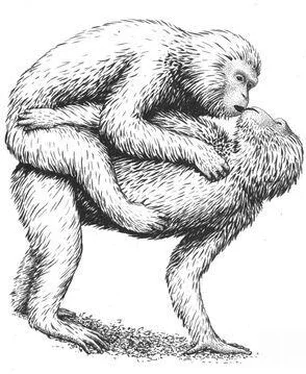

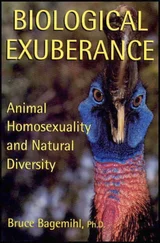
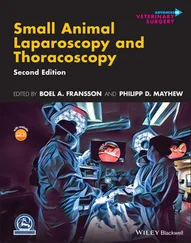
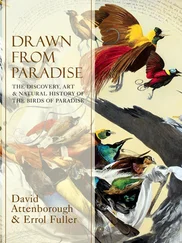

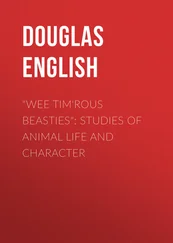
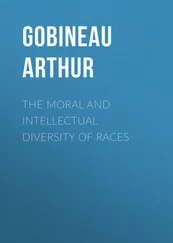
![Various - Birds and Nature, Vol. 10 No. 1 [June 1901]](/books/745231/various-birds-and-nature-vol-10-no-1-june-1901-thumb.webp)
![Various - Birds and Nature Vol. 10 No. 5 [December 1901]](/books/745236/various-birds-and-nature-vol-10-no-5-december-1-thumb.webp)

![Various - Birds and Nature, Vol. 12 No. 5 [December 1902]](/books/745517/various-birds-and-nature-vol-12-no-5-december-thumb.webp)
![Various - Birds and Nature Vol. 11 No. 2 [February 1902]](/books/745533/various-birds-and-nature-vol-11-no-2-february-1-thumb.webp)